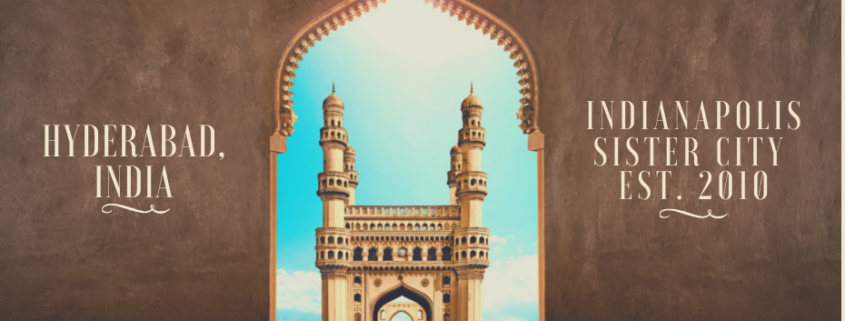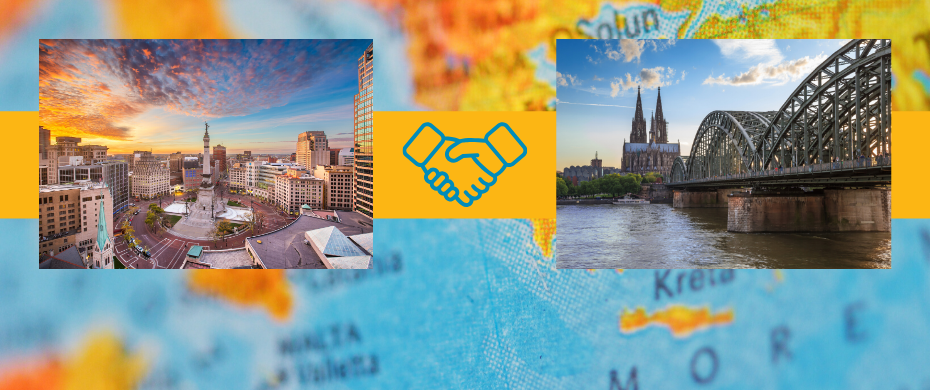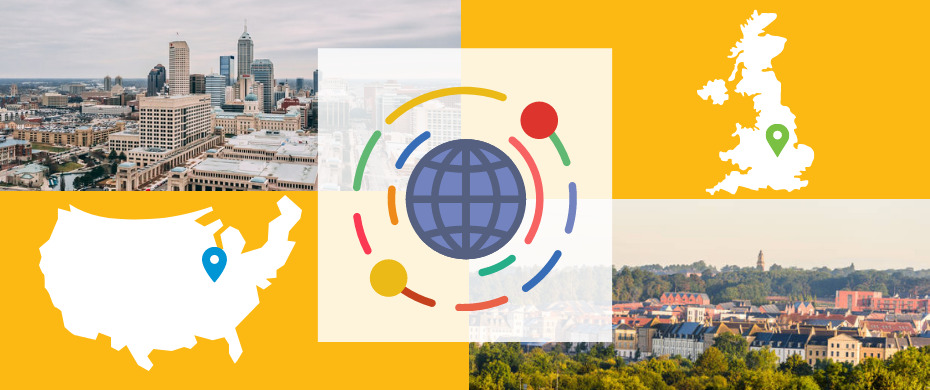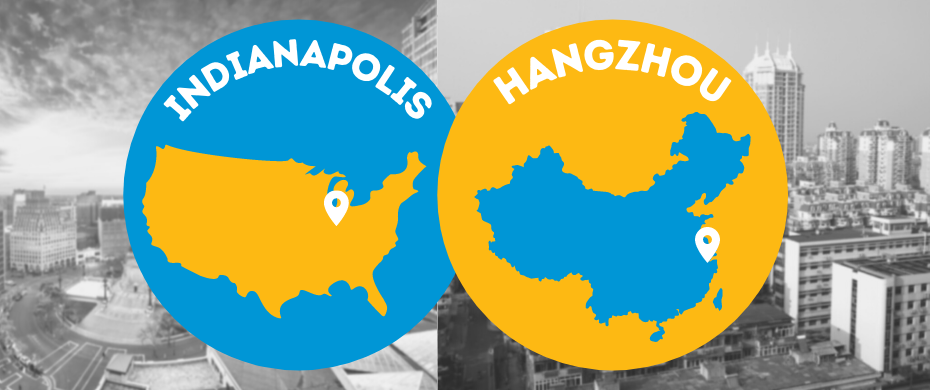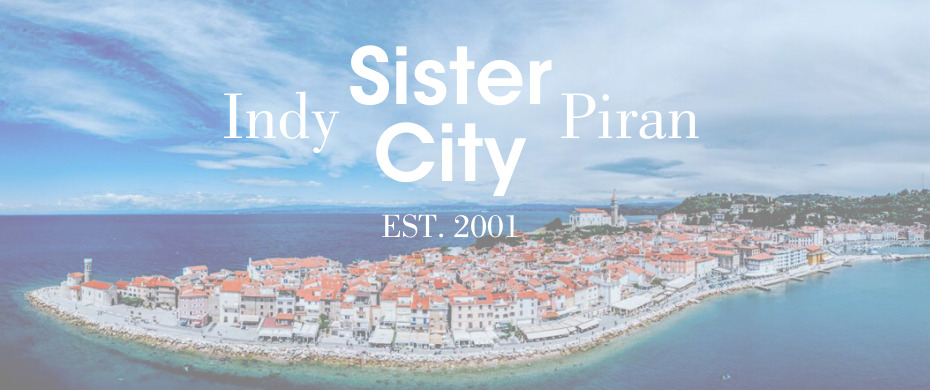INDIANAPOLIS SISTER CITIES: HYDERABAD, INDIA
GENERAL INTRODUCTION
In 2010, Indianapolis established its eighth sister city relationship with Hyderabad, India while under Mayor Gregory Ballard’s administration.
The Indianapolis Sister Cities program is a champion for cultural connections and education, business and economic networking, student and professional exchange programs, cultural activities and festivals, and hosting international visitors. The program was established in 1978 and has since formed partnerships with nine different sister cities.
The goal of the union with Hyderabad was to build a relationship with a city in India whose education systems and cultural infrastructure could foster exchanges with Indianapolis institutions. Prioritizing building on India’s and Indianapolis’ respective reputations as leaders in IT technology and innovation, Indianapolis created partnerships with India-based technology and engineering companies, life science and pharmaceutical companies, agricultural schools, and research organizations.
| Indianapolis | Hyderabad | |
| Year Established | 1821 | 1591 |
| Population | 864,447 | 9,482,000 |
| Size | 368 square miles | 251 square miles |
BRIEF HISTORY
The city of Hyderabad was founded in 1591 by Muhammad Quli Qutb Shah. It served as a center for culture and became a popular trading spot for diamonds and pearls. In 1724 the Nizams conquered the city of Hyderabad and formed a subsidiary alliance with the British. The territory became Hyderabad State, the largest princely state in British India, with the city of Hyderabad as its capital. Industries, railways, modern education, and airways developed in Hyderabad during this period.
India gained its independence in 1947, but the Nizam resisted assenting Hyderabad to the newly formed nation. In 1948, the Indian army annexed Hyderabad. Hyderabad existed in the Indian Union from 1948 to 1956. In 1956, the state was divided based on linguistic differences. The Telugu speaking people from the Telangana region combined with the state of Andhra to form Andhra Pradesh, and the city of Hyderabad became its capital. In 2014, the people from the Telangana region received permission to split from the Indian parliament and form Telangana state. It was agreed that Hyderabad would be the capital for both Telangana and Andhra Pradesh for up to ten years to allow Andhra Pradesh to build its own capital.
OVERVIEW
Hyderabad is situated on the Deacon Plateau along the banks of the Musi River in south-central India. It’s the largest city in Telangana and the fourth largest city in India. It has a tropical wet and dry climate with temperatures ranging from 70-91 degrees Fahrenheit.
Urdu was the dialect spoken primarily by Muslims and was the official language of the royals in Hyderabad from roughly 1886-1948. Now, the primary spoken language is a distinct dialect of Hindi that was influenced by Urdu. Telugu is also widely spoken in Hyderabad, along with English, Hindi, Tamil, Marathi, and Gujarati.
CULTURE
The culture of Hyderabad, also known as Hyderabadi, is a unique blend of modern and traditional cultures. Hyderabadi is distinct from the rest of Telangana as it highlights Islamic influence inherited from the period it was under Nizam rule. While Islamic culture is still quite prevalent in Hyderabad, the city also represents a more cosmopolitan culture. The city is united with the Hindus, Christians, and Muslims both religiously and culturally. There’s strong communal harmony between the two main religious and cultural groups in the city, the Telugu people and the Hyderabad Muslims, but being a multicultural melting pot, Hyderabad celebrates all ethnicities.
DATE NIGHT IN HYDERABAD: DINNER & THE MOVIES
Hungry? Hyderabadi cuisine is a rich blend of Mughal, Nawabi, and Andhra cuisines. It has strong flavors and consists of various wheat and rice dishes cooked with meats, dry fruit, and spices. Traditional Hyderabadi Dum Biryani is the most celebrated dish from Hyderabad and is made from primarily rice and goat meat with garnishes of pudina, fried onion, and boiled eggs.
Nothing beats good entertainment after a delicious meal! Hyderabad has earned the nickname, “Tollywood,” from its involvement in Telgu-language films. Its home to Ramoji Film City, the largest studio complex in the world, and hosts some of the world’s most prominent film festivals. Ramoji Film City is spread across 2000 acres and is a popular tourist destination.
A SITE TO SEE: ART & ARCHITECTURE
Hyderabad has a rich art scene. The Deccani style of painting originated in the city and is characterized by extensive use of gold and white colors. The paintings are mostly based on nature, but some reflect historical events. Kalamkari is another prominent style of painting in Hyderabad. The ink used in Kalamkari paintings is made from bamboo soaked in jaggery and water, and the colors come from fruit, vegetables, and other natural dyes. Besides painting, dance and music are very much a part of Hyderabad’s culture. Hyderabad has several art centers that display the heritage of dance and music and host dance festivals. Hyderabad is known for its handicraft market and has numerous handicraft exhibits all throughout the city. Birdriware, a fine art metal handicraft, was popularized in Hyderabad during the 16th century and now, Hyderabad accounts for the highest production of Birdriware in India.
Hyderabad was named “Best Heritage City of India,” due to its distinct Indo-Islamic architecture style that’s infused with local contributions. The streets are dotted with historic mosques and palaces from the Muhammad Quli Qutb Shah period. You can see influences from Hindu architecture in the temples around Hyderabad. The city also displays more modern architectural styles in buildings that were constructed after it split from the Indian parliament. Charminar is the most famous landmark in the heart of Hyderabad and is listed as one of the most recognized structures in India. The monument was built in 1591 by Muhammad Quli Qutb Shah and is an iconic symbol of Hyderabad. It’s historically famous for having a mosque on the top floor for over 400 years. Today, it’s a popular tourist attraction and hosts many local markets.
By Elliott Hodge, marketing & communications intern

